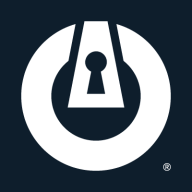

ThreatLocker Zero Trust Endpoint Protection Platform and SentinelOne Singularity Identity compete in the endpoint security market. ThreatLocker appears to have the upper hand in remote management and customer service, while SentinelOne excels in AI-driven threat detection and automation.
Features: ThreatLocker offers features like learning mode, application control through allowlisting, and ring-fencing, providing visibility and selective process elevation. SentinelOne focuses on AI-driven threat detection, dynamic behavior analysis, and identifying both known and unknown threats.
Room for Improvement: ThreatLocker could improve flexibility in training options, integration into PSA systems, and policy management complexities. SentinelOne could enhance its UI, provide better endpoint management support, and expand web filtering capabilities to reduce performance impacts.
Ease of Deployment and Customer Service: ThreatLocker supports diverse deployments, including on-premises and hybrid models, and offers fast, knowledgeable customer support through its Cyber Hero program. SentinelOne's public cloud deployment is robust but faces support responsiveness challenges and ease of use for non-IT users, making ThreatLocker's support superior in efficiency.
Pricing and ROI: ThreatLocker is reasonably priced, offering substantial ROI and predictable costs. SentinelOne is cost-effective relative to competitors but has an opaque pricing structure with annual increases that can lead to dissatisfaction. While both provide returns on investment, ThreatLocker is seen as more transparent and offers greater predictability in pricing.
If something were to happen without ThreatLocker, the cost would be huge, and thus, having it is definitely worth it.
The main return on investment is peace of mind, knowing that with ThreatLocker on any endpoint, it will almost always block all malicious code or exploits, even zero-day exploits.
It keeps malware, Trojans, and ransomware at bay.
They have been responsive to our needs as integrators and those of the client.
They have been very responsive, helpful, and knowledgeable.
I would rate their customer support a ten out of ten.
Their support is world-class.
I started off with just the servers, and within a month and a half, I set up the entire company with ThreatLocker.
It seems to primarily operate on the endpoints rather than at a central location pushing out policies.
I would rate it a ten out of ten for scalability.
For five years, we have not had a problem.
Once deployed, it downloads the policies locally, so even if the computer doesn't have internet, it doesn't matter.
It has been very stable, reliable, and accessible.
There is a clear roadmap for improvements, including enhancing capabilities with AI and seamless functionality in an MSP model for deeper visibility across multiple agencies.
Controlling the cloud environment, not just endpoints, is crucial.
This is problematic when immediate attention is needed.
Comprehensive 24-hour log monitoring is a valuable enhancement for both business and enterprise-level users.
After conversations with other partners, it became clear we underpriced it initially, which caused most of our issues.
We are moving towards the Unified solution, where they basically bundle everything together, providing us better stability with the ability to bring in new product offerings without having to go back to the customer and say, 'This is going to cost you.'
I had a really good deal at the time, and it continues to be cost-effective.
With visibility into endpoint telemetry, SentinelOne does provide useful information to find threat actors and empowers those who are in the business of threat hunting.
ThreatLocker Zero Trust Endpoint Protection Platform's ability to block access to unauthorized applications has been excellent.
It protects our customers.
The major benefit is fewer breaches overall, as nothing can be run without prior approval. This helps my company protect its data and secure itself effectively.
| Product | Market Share (%) |
|---|---|
| ThreatLocker Zero Trust Endpoint Protection Platform | 2.7% |
| SentinelOne Singularity Identity | 1.9% |
| Other | 95.4% |
| Company Size | Count |
|---|---|
| Small Business | 4 |
| Midsize Enterprise | 5 |
| Large Enterprise | 13 |
| Company Size | Count |
|---|---|
| Small Business | 32 |
| Midsize Enterprise | 4 |
| Large Enterprise | 3 |
Singularity Identity, a component of the Singularity platform, provides threat detection & response (ITDR) capabilities to defend Active Directory and domain-joined endpoints in real-time from adversaries aiming to gain persistent, elevated privilege and move covertly. Singularity Identity provides actionable, high-fidelity insight as attacks emerge from managed and unmanaged devices. It detects identity misuse and reconnaissance activity happening within endpoint processes targeting critical domain servers, service accounts, local credentials, local data, network data, and cloud data. On-agent cloaking and deception techniques slow the adversary down while providing situational awareness and halting adversarial attempts at lateral movement. Singularity Identity helps you detect and respond to identity-based attacks, providing early warning while misdirecting them away from production assets.
Singularity Identity’s primary use case is to protect credential data and disrupt identity-based attacks. The most valuable function of Singularity Identity is its ability to misdirect attackers by providing deceptive data to identity-based recon attacks. Additionally, it can hide and deny access to locally stored credentials or identity data on Active Directory domain controllers.
Singularity Identity also provides rapid detection and respond to identity attacks, capturing attack activity and feeding it directly to the Singularity platform’s Security DataLake for enterprise-wide analysis and response.
By implementing Singularity Identity, organizations benefit from enhanced security, reduced credential-related risks, and improved user productivity. It detects and responds to identity-based attacks, ensuring only authorized individuals can access critical identity data. With its cloaking capabilities to hide identity stored locally on endpoints or in the identity infrastructure and it’s ability to provide decoy results to identity-based attacks, organizations can effectively secure their sensitive or privileged identities, resulting in improved overall identity security.
ThreatLocker Zero Trust Endpoint Protection Platform empowers organizations with application control, selective elevation, and ring-fencing to enhance security and prevent unauthorized access.
ThreatLocker provides comprehensive security management using application allowlisting to ensure only approved software operates across servers and workstations. The platform's centralized management simplifies security processes by consolidating multiple tools, and its robust capabilities align with zero-trust strategies by actively blocking unauthorized applications and ensuring compliance. Users note intuitive features such as mobile access, helpful training resources, and responsive support, which effectively reduce operational costs and help desk inquiries. The managed service providers prefer ThreatLocker to maintain network integrity by preventing malicious scripts and unauthorized access attempts. However, users identify room for growth in training and support flexibility, the interface, and certain technical challenges like network saturation from policy updates.
What are the most important features?Organizations utilize ThreatLocker for application allowlisting, ensuring only authorized software operates to prevent unauthorized access efficiently. Deployed across servers and workstations, its features support zero-trust principles and are favored by managed service providers for application management and network integrity.
We monitor all Advanced Threat Protection (ATP) reviews to prevent fraudulent reviews and keep review quality high. We do not post reviews by company employees or direct competitors. We validate each review for authenticity via cross-reference with LinkedIn, and personal follow-up with the reviewer when necessary.